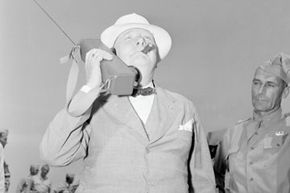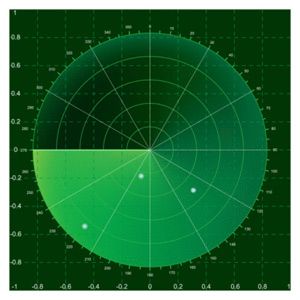Cell phone technology advances at a mind-warping rate. But cell phones are still just really fancy radios, and they have an Achilles heel -- they're completely helpless without a network of nearby cellular towers. Walkie-talkies, though? These old-school radios make short-range wireless communications possible in places where cell phones go to die.
Walkie-talkies are wireless, hand-held radios that are small enough to take just about anywhere. They look a lot like cordless phone handsets, with a body that includes a microphone and speaker, as well as an antenna. Unlike a phone, though, a walkie-talkie's speaker and microphone are placed right next to each other, and the speaker is much louder, so that anyone within earshot can follow the conversation.
Advertisement
Walkie-talkies are battery-powered transceivers, meaning they can both send and receive radio messages. They have a half-duplex channel, which indicates that only one walkie-talkie on a channel can transmit a signal at one time, although many radios can receive that same signal. In other words, unlike your phone, in which both parties can interrupt or add to the conversation in a ceaseless flow of sound, walkie-talkies use a push-to-talk (PTT) system -- you have to press a button in order to speak, and you have to release that button to hear sound coming from other units.
Because you don't have to dial a number each time you want to transmit, walkie-talkies are quick and easy to use. And best of all, they don't rely on finicky cell phone signals. The handsets transmit directly to each other, so they still work when cell networks fail during natural disasters or power outages. They're designed primarily for short-range communications, in which groups of people are within a few miles of each other.
Businesses use walkie-talkies so that employees can chat efficiently in and around their indoor and outdoor structures. Wilderness lovers tote walkie-talkies so that they can keep in touch during hiking or hunting trips out where cell phone cover age is non-existent. Even baby monitors employ one-way walkie-talkie technology, so that you know if Junior is sleeping peacefully or attempting escape.
Keep reading and you'll see how they developed and why they're such vital communication devices.
Advertisement





